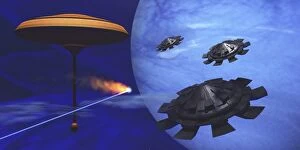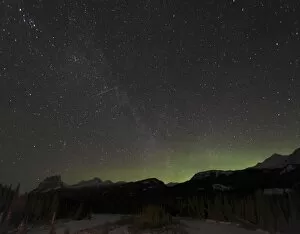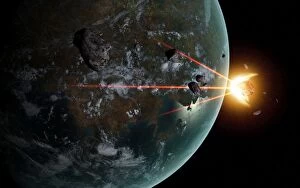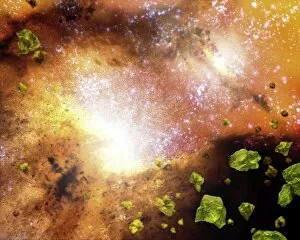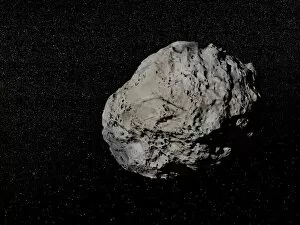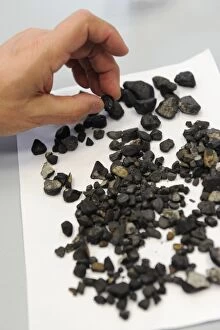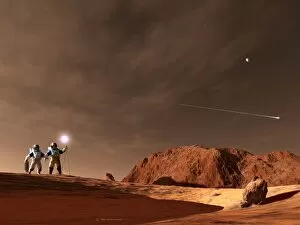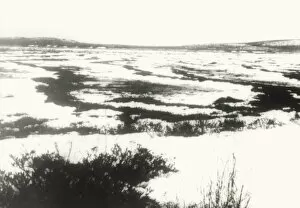Meteoroid Collection (#2)
"Exploring the Mysteries of the Universe: Captivating Meteoroid Encounters" Witnessing the celestial dance
For sale as Licensed Images
Choose your image, Select your licence and Download the media
"Exploring the Mysteries of the Universe: Captivating Meteoroid Encounters" Witnessing the celestial dance, as the Milky Way illuminates with a mesmerizing aurora while a shooting meteor and lightning create an enchanting spectacle. Brace yourselves for impact. An artist's depiction portrays a colossal asteroid hurtling towards Earth on a collision course, reminding us of our fragile existence in this vast universe. Saturn's second-largest moon, Rhea, unveils its hidden secret—a captivating ring of debris encircling its ethereal beauty like a cosmic halo. Embarking on an otherworldly journey to Hades, a ringed planet shrouded in mystery, as a stealth fighter navigates through the depths of space. A chilling vision unfolds before our eyes—an apocalyptic illustration portraying Earth exploding from within, serving as a stark reminder of nature's immense power and unpredictability. Against the backdrop of our beloved blue planet lies an awe-inspiring sight—a formidable asteroid positioned prominently in front, showcasing both its magnificence and potential threat. Glimpsing into the distant reaches of space reveals an artist's impression capturing the grandeur of one-half-mile-diameter Kuiper Belt Object—unveiling secrets yet to be discovered. A young star finds itself surrounded by swirling debris—a testament to creation unfolding amidst chaos—painting an exquisite picture against the canvas of deep space. The night sky comes alive with brilliance during Argentina's Geminids meteor shower; behold as bolides streak across above a setting moon in Mercedes—an unforgettable celestial symphony. Lost amidst infinite darkness floats an asteroid—an enigmatic wanderer silently traversing through space—reminding us that we are not alone in this vast cosmic expanse. In far-off horizons where nebulae evaporate into oblivion lies an extraordinary scene—the distant silhouette of an asteroid field, captivating our imagination and igniting curiosity.



